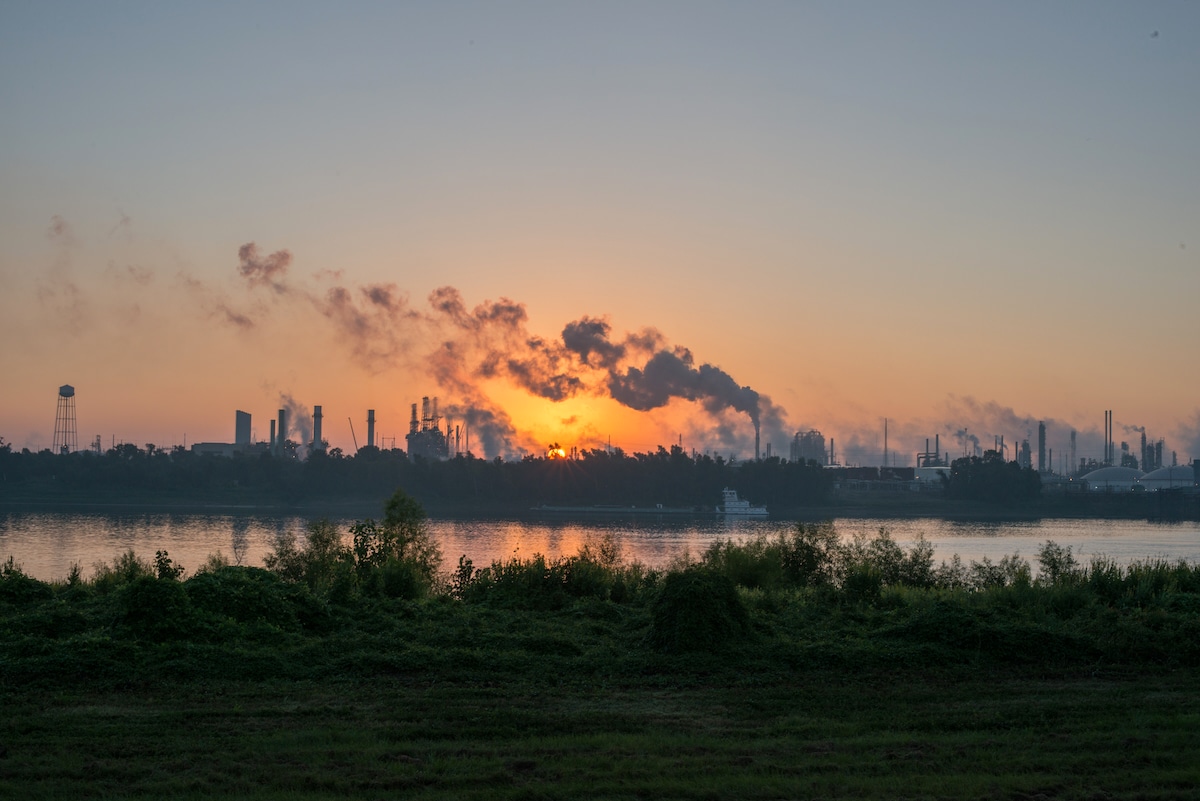Ecowatch
EPA Limits Toxic Pollution From Chemical Plants

Smoke billows from chemical plants over an industrial and residential area of Baton Rouge, Louisiana known as “Cancer Alley” on Oct. 12, 2013. Giles Clarke / Getty Images

Why you can trust us
Founded in 2005 as an Ohio-based environmental newspaper, EcoWatch is a digital platform dedicated to publishing quality, science-based content on environmental issues, causes, and solutions.
The U.S. Environmental Protection Agency (EPA) has finalized clean air standards that will limit the toxic pollutants released by chemical plants. According to the agency, the new standards will reduce the number of people with increased cancer risks in vulnerable communities near these chemical plants by 96%.
The rule sets out to limit toxic air pollution, including from ethylene oxide and chloroprene. EPA announced that these clean air standards are expected to reduce toxic air pollution from chemical plants by 6,200 tons each year and volatile organic compounds (VOCs) by 23,700 tons annually.
“This is a game changer any way you look at it,” EPA Administrator Michael Regan said at a press event, as reported by NPR. “This is a game changer for the health. It’s a game changer for the prosperity. It’s a game changer for children in these communities nationwide.”
The standards are slated to reduce ethylene oxide and chloroprene emissions from chemical plant processes and equipment by about 80%. Other toxic pollutants covered by the new rule include benzene, 1,3-butadiene, ethylene dichloride and vinyl chloride.
The EPA previously noted that long-term exposure to ethylene oxide emissions can increase risks of certain cancers, including breast cancer, non-Hodgkin lymphoma and lymphocytic leukemia. The EPA’s Integrated Risk Information System (IRIS) assessment in 2010 classified chloroprene as a likely carcinogen.
The rule will cover about 200 plants, most of which are in Louisiana and Texas, known for making synthetic organic chemicals, polymers and resins. In particular, the rule is expected to impact the Denka Performance Elastomer plant in LaPlace, Louisiana. As The Associated Press reported, this facility is the largest source of chloroprene emissions in the U.S.
“Today marks a victory in the pursuit for environmental justice, with the final rule poised to significantly reduce the toxic air pollution that harms communities in Texas’s Gulf Coast, Louisiana’s Cancer Alley, and throughout the U.S.,” Patrice Simms, Earthjustice vice president for healthy communities, said in a statement. “Setting protective air standards for over 200 chemical plants and requiring fenceline monitoring for some of the most toxic emissions shows a commitment to protecting public health. We look forward to the EPA’s swift implementation and rigorous enforcement of this critical rule.”
As part of the new standards, the EPA will also require fenceline monitoring of the toxic pollutants. Synthetic organic chemical plants will have a two-year deadline to implement their fenceline monitoring programs, while facilities manufacturing neoprene will have 90 days to begin fenceline monitoring for chloroprene emissions.
The public will be able to access the data from the monitoring programs via WebFIRE, a tool made available by the EPA.
Subscribe to get exclusive updates in our daily newsletter!
By signing up, you agree to the Terms of Use and Privacy Policy & to receive electronic communications from EcoWatch Media Group, which may include marketing promotions, advertisements and sponsored content.
Source
Disclaimer: No copyright infringement intended. All rights and credits reserved to respective owner(s).











